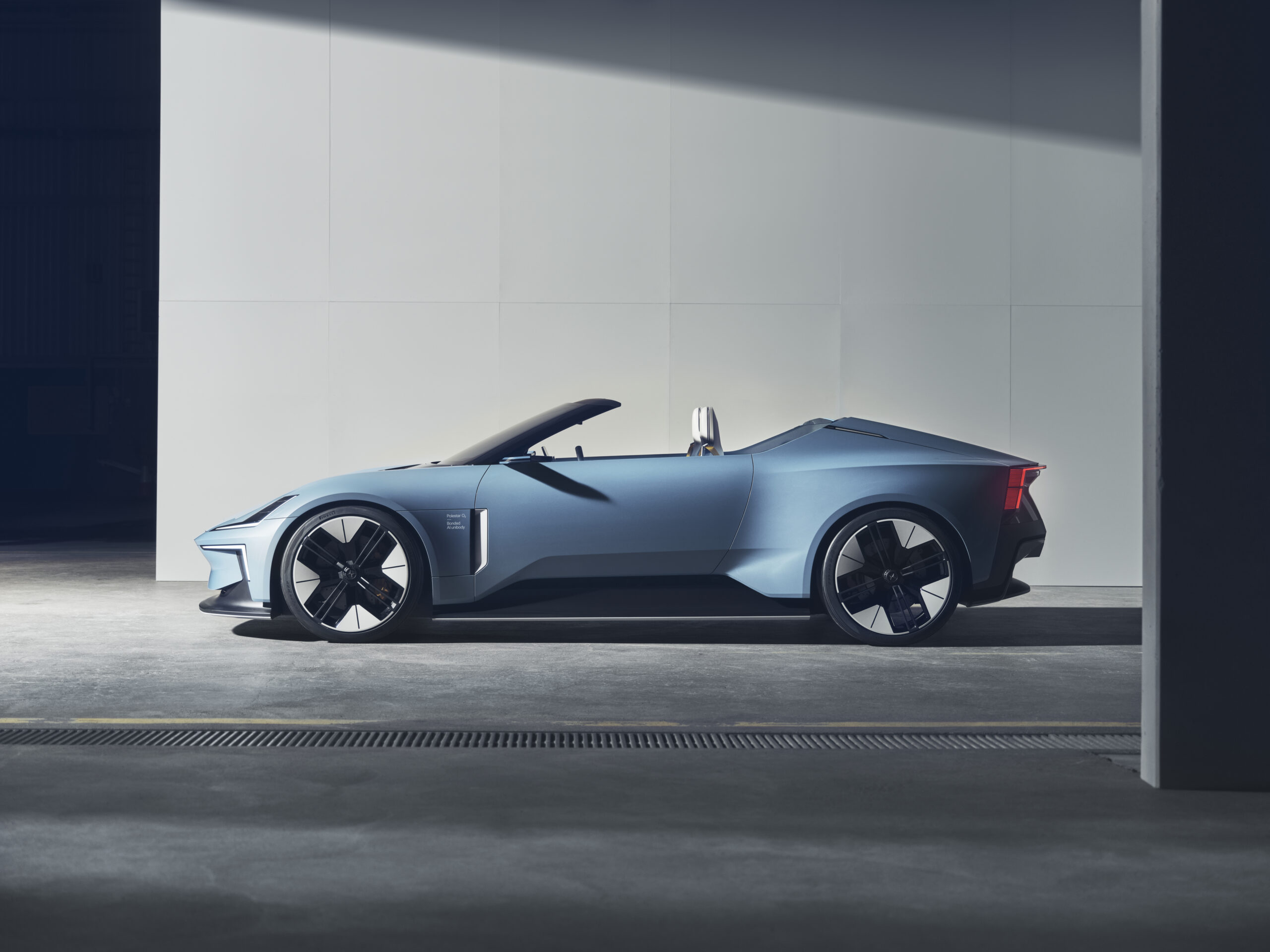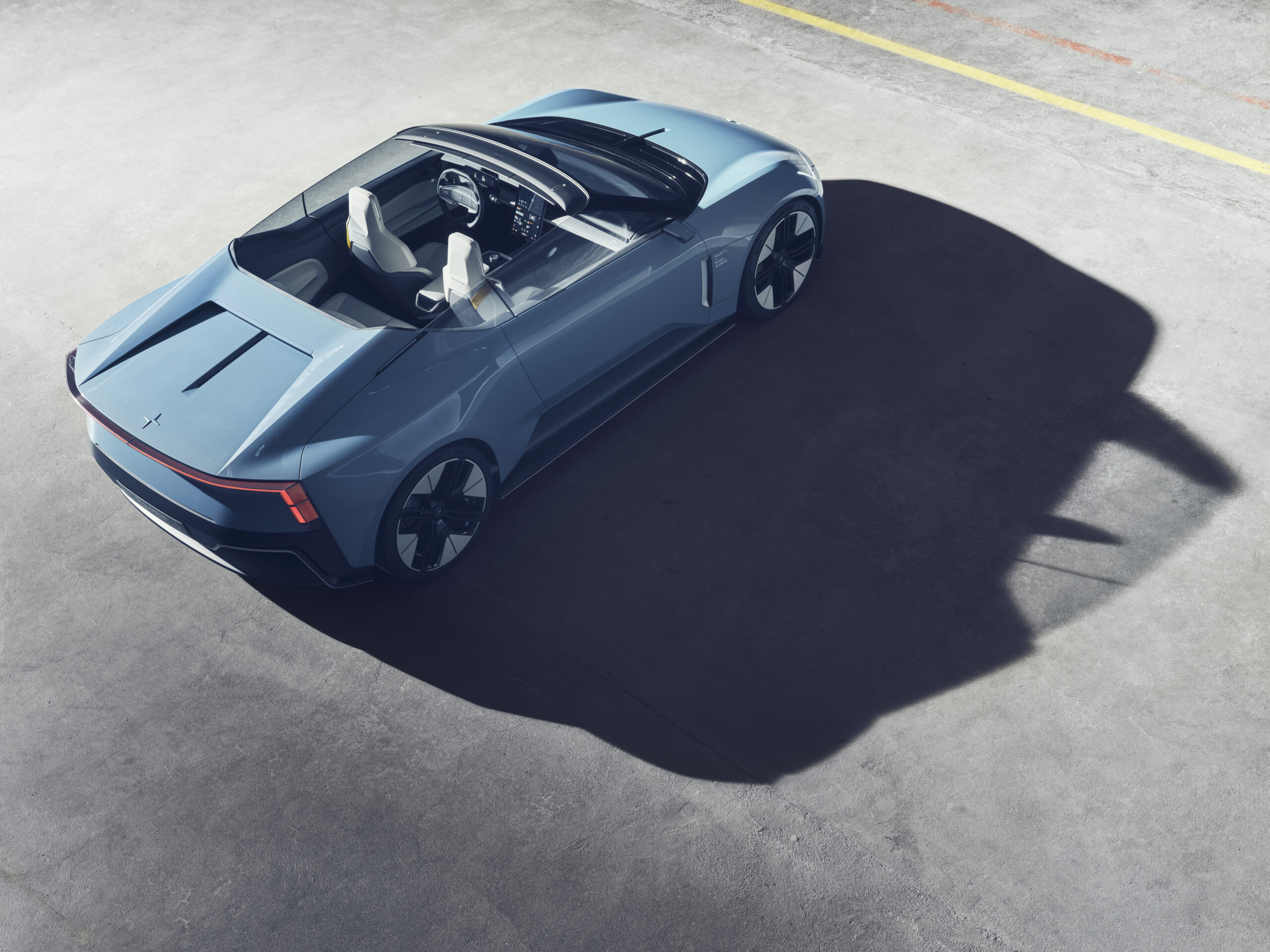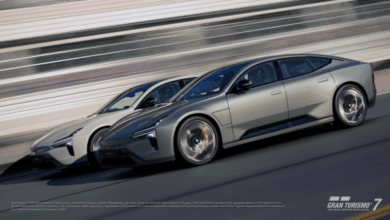Polestar O2 Concept Imagines Future of Sportscars

Polestar, the all-electric performance car brand, has revealed a new concept car, the Polestar O2, that reimagines the future of sports roadsters for the electric age.
“Polestar O2 is the hero car for our brand,” comments Thomas Ingenlath, Polestar CEO. “It opens the door to our secret chamber of future potential. This is a taste of what we can design and engineer with the talent and technology we have in-house. It looks incredible and being able to lower the roof and not hear an engine promises a superb sensation.”
“Polestar O2 is our vision of a new era for sports cars,” said Polestar’s Head of Design, Maximilian Missoni. “By mixing the joy of open top driving with the purity of electric mobility, it unlocks a new mix of emotions in a car. But as with all our cars, we are about more than just straight-line sprints. It’s when you turn the steering wheel that the true fun begins.”
The driving experience in the Polestar O2 is designed to be lively, light and full of confidence, Missoni added. The roadster is built on the bespoke bonded aluminum platform, which is adapted from the Polestar 5, developed in-house by Polestar’s R&D team in the UK. The rigidity of the bonded aluminum platform is geared toward heightened dynamic response. Handling dynamics are taut thanks also to small roll angles and high roll damping, and the agile, direct steering feel is linear, with great steering torque build-up, designers said.
Related to the previously released Polestar Precept concept car, designers opted for a low and wide body with an assertive stance, compact 2+2 cabin design, minimal overhangs and a long wheelbase, to embody classic sports car proportions.
Aerodynamics are manipulated to maximize range thanks to disguised design features like integrated ducts that improve laminar air flow over the wheels and body sides, and the rear lights that function as air blades to reduce turbulence behind the car, the company said.

Inside, a new thermoplastic mono-material is featured extensively. The term “mono-material” describes the use of a single base material to manufacture different components.
In Polestar O2, recycled polyester is the sole material used for all the soft components of the interior: foam, adhesive, 3D knit fibers and non-woven lamination, and aims to simplify recycling and reduce weight and waste.
Different grades of aluminum are used throughout the chassis, and these different grades are labeled, allowing them to be recycled more effectively and for their properties to be retained. High grade aluminum remains high grade, while other grades maintain their varied characteristics, allowing for greater material efficiency and a lower requirement for virgin aluminum.
The Polestar O2 features an autonomous cinematic drone integrated behind the rear seats. Developed in collaboration with Aerofugia’s consumer electronics brand Hoco Flow, the concept drone can be deployed while the car is moving.
Polestar engineers have developed a specialized aerofoil that raises behind the rear seats to create a calm area of negative pressure that allows the drone to take off when the car is on the move. The drone operates autonomously, automatically following the car at speeds up to 56 mph and the driver can choose between an atmospheric sequence – great for a coastline cruise – or a more action-filled sequence with a sportier expression. After filming, the drone can autonomously return to the car. Video clips can be edited and shared directly from the 15-inch center display when the car is parked.
“We wanted to emphasize the experience you can have with a car like the Polestar O2 in new and unusual ways,” said Missoni. “Integrating an autonomous cinematic drone was something that allowed us to push the boundaries on the innovation front. Not needing to stop and off-load the drone before filming, but rather deploying it at speed, is a key benefit to this innovative design.”



